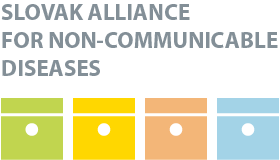—
3. Financing
| << PREVIOUS
2.9 Patient empowerment |
Introduction – Organization – Financing – Resources – Provision – Reforms – Assessment – Conclusions – Appendices | NEXT >>
3.1 Health expenditure |
- 3.1 Health expenditure
- 3.2 Sources of revenue and financial flows
- 3.3 Overview of the statutory financing system
- 3.4 Out-of-pocket payments
- 3.5 Voluntary Health Insurance (VHI)
- 3.6 Other financing
- 3.7 Payment mechanisms
In 2009, total health expenditure as share of GDP was 7.6% according to national sources. This high GDP share was rather exceptional. Before 2009, the share was around 6.5% of GDP for three consecutive years. Slovak health insurance companies spend a relatively high share of their revenue on pharmaceuticals. Pharmaceutical expenditure amounts to 30% of expenditures by health insurance companies – compared to 7% on primary care, 11% on ambulatory secondary care and 27% on inpatient care.
The main sources of revenue in the health system are contributions paid to the health insurance companies under the SHI system. These include contributions by (1) employees and employers, (2) self-employed people, (3) voluntarily unemployed, and (4) “state-insured”. The latter term is used for the significant group of mostly economically inactive people for whom the state pays contributions (approximately two-thirds of the population and one-third of total resources from contributions). Payments to providers are subject to a contract that determines the amount of payments, the type and quality of services, and the payment system. Furthermore, the health insurance companies fund the HCSA in proportion to their revenue.
The range of benefits available to individuals covered by SHI in Slovakia is broad. The SHI system is financed through a combination of contributions from the economically active population and state contributions on behalf of the non-economically active population (“state-insured”). Contributions are collected and administered by health insurance companies. To alleviate the financial burden on health insurance companies with a higher-risk portfolio and to reduce the potential for risk selection, SHI contributions are redistributed among the health insurance companies using a risk adjustment scheme. Health care purchasing is based on selective contracting.
Out-of-pocket payments in Slovakia mainly consist of (1) user fees for prescriptions and various health services; (2) co-payments for prescription pharmaceuticals and spa visits; and (3) direct payments for OTC pharmaceuticals, above-standard care, preferential treatment and care not covered by SHI. An average Slovak spends more than €200 annually on health out of pocket. In 2009, out-of-pocket expenditure amounted to 1.8% of GDP. As share of total health expenditure, Slovaks spent 23.6% on health out of pocket in 2009, a significant rise from 2002 when it was only 11.7%.
Private VHI is part of the commercial insurance system. So far, private VHI plays only a marginal role due to the broad benefit package and low official cost-sharing requirements. According to the National Bank of Slovakia, total VHI premiums are approximately €1 million (in 2009). Thus they account for only 0.02% of total health expenditure and 0.2% of overall non-life insurance premiums.
Since Slovakia’s SHI system provides a broad range of benefits and universal coverage, the role of other sources of funding is rather limited. However, all employers must offer an occupational health service for employees working in high-risk environments since 2008.
Providers are paid according to an individual contract, which determines the amount, the nature and quality of services as well as the payment system. A given health insurance company may have negotiated different prices for different providers, which is particularly the case in inpatient care.
News
The amendment of the Decree on emergency medical service
Health insurance companies returned over 400 thousand €
The HCSA received 1,647 complaints last year
A half million people will earn more
Most of public limited companies ended in the black
Debt of hospitals on premiums has grown to nearly € 105 MM
Slovak health care may miss € 250 million next year
Profits of HIC amounted to € 69 mil. last year
Owners of Dôvera paid out money but did not paid taxes
Like us on Facebook!
Our analyses
- 10 Years of Health Care Reform
- New University Hospital in Bratislava
- Understanding informal patient payments in Kosovo’s healthcare system
- Analysis of waiting times 2013
- Health Policy Basic Frameworks 2014-2016
- Analysis of informal payments in the health sector in Slovakia
- Serbia: Brief health system review
developed by enscope, s.r.o.
